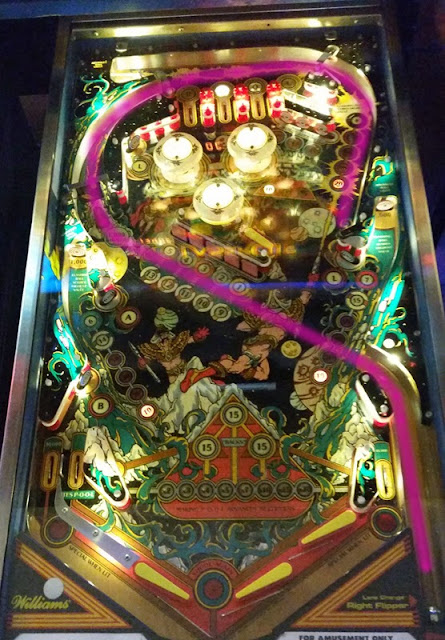Had an awesome weekend. Above and beyond the 9 hours me and my wife spent at Clay's (which was amazing), we also visited Marvin's Marvelous Mechanical museum, and an arcade called "the arcade". Clay's was simply amazing, and I did shake his hand and thank him for everything he's done. Ok, so he's got 200 pinballs, and when I say that I mean all 200 working. Everything from early woodrails, to solid state, to modern DMD. Rare titles, common titles. He's got 2 bowlers, a shooting gallery EM, a pitch and bat. Williams, gottlieb, Stern, data east, zaccaria, a couple oddball spanish pins. Even when pins went down, he had a staff of well over a dozen techs jumping on issues to keep them running. Because of the limited ticket sales, it kept the crowd to a minimum. Marvin's had absolutely horribly taken care of pins, and I posted a message on pinside to Mipinball to let them know. I was immediately tagged as a troll, but it soon turned back my way when another local admitted the pins were getting pretty bad, and the router admitted he needed to get in there after I posted photos of how bad they were. "the arcade" was pretty neat, reminded me a lot of "Flynn's arcade" in tron. Lower level, and then a balcony with more games instead of an office, and lots of ceiling fans. The only thing missing was some good music playing and some neon.
So what did I learn from all of this? Well actually 2 things:
1. Sometimes pinball is about slight of hand (magic if you will). Being that there were many titles with lower playfields, I really thought about my design. Now since I haven't actually looked underneath the playfield of any pinball title with a lower level, I can't be sure how it works. Though I'm pretty sure on old gottliebs like haunted house and black hole they really did drop the ball from the upper playfield to the lower one, then sent it back up via a VUK. What I'm getting at is that I'm thinking I don't really need to do this (since I have one ball). I mean I'm not dealing with silver and white powerballs like twilight zone, why would I bother transferring the ball and deal with hangups, and spend the time on building subway systems? So what I'm going to do is create the illusion that the ball went from the ball trough down to the lower level, then back up to the trough. When the ball drains, the switch will let the system know it drained, and it will activate a VUK scoop in the lower playfield to pop the ball waiting down there into play. When it drains, it sits in the VUK (activating the next switch to tell the trough solenoid to pop the ball sitting in the trough into the shooter lane). From a player's perspective, they have no idea what's going on under the curtain. From my perspective, I keep things simple.
2. My shooter lane isn't consistent, but it can be. I played a few titles with a similar shooter lane as mine. Some worked 1/4 of the time, like 4 million BC:
http://www.ipdb.org/machine.cgi?id=935
Now maybe this was meant to work, but the shooter lane spring wasn't as strong as it's supposed to be? So then I played a Williams early solid state (can't remember the title, but it was around the time of Flash with a similar layout). Much like flash, it was as if the ball was told where to go because hard or light shots, the ball always wanted to follow the path it was supposed to
In order to make my layout flow well, this is the last thing I really have to improve, so I'm going to take a cue from williams and try to get my walls closer to this layout to ensure the ball travels around the orbit.
I started working on a cardboard boat for the lower playfield to sort of lay things out but it's too early to post photos just yet. I might post a video later this week.


No comments:
Post a Comment